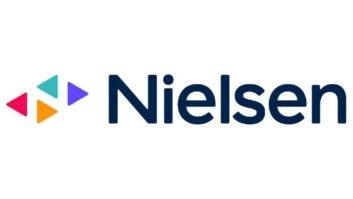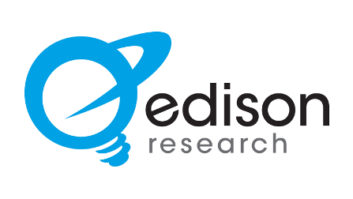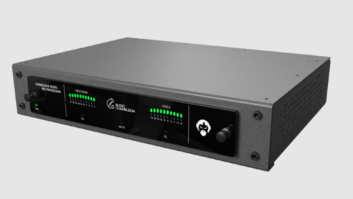Applied Technology: Streaming with the MPEG HE-AAC Audio Codec
Apr 1, 2014 8:20 AM, By Matthias Rose, Fraunhofer IIS
It’s hard to believe that the first Internet radio broadcast took place just 20 years ago. Today, tens of millions of people stream Internet radio to their smartphones, tablets and other connected devices. Nearly every terrestrial radio station as well as Internet-only broadcasters offer streaming services to reach listeners. Thanks to changes in consumer listening behaviors, users are embracing Internet radio on a massive range of devices and the Internet radio audience is expected to continue growing over the next years. During 2013, the number of U.S. Internet radio listeners grew to approximately 147 million, up 11 percent from 2012.
Streaming services face significant monetization challenges as Internet services pay higher content royalties than cable and satellite radio, while AM/FM radio services are not required to pay any fees. There are several audio codecs in use for streaming but they vary significantly in their ability to provide and maintain reliable audio quality at low bit rates. Yet one codec stands out from the others: The ISO MPEG standard High Efficiency AAC (HE-AAC), which has become the audio codec of choice among leading broadcasters, including the BBC, NPR and Cienradios as well as music service providers such as Pandora and iTunes Radio.
In their search for the best audio codecs, U.S. public radio broadcaster NPR conducted a test of six codecs, including HE-AAC, LAME MP3, AAC-LC, AMR-WB+ and xHE-AAC (Extended HE-AAC). (Read the NPR Report.) NPR tested each codec over a wide range of bit rates and programming formats, and found that HE-AAC was the top performer, citing its high-quality audio, low bit rates and broad compatibility with target device platforms such as Android, Apple iOS, Windows, Mac as well as Adobe Flash and leading HTML5 browsers. The researches also noted that HE-AAC does not require any content distribution fees, and that it provides support for audio-specific metadata for loudness normalization.

Figure 1. For HE-AAC bit rates =160kb/s, the average of all 10 test items was found to be in the region of excellent.
Co-developed by Fraunhofer IIS, the HE-AAC audio codec provides the same quality audio at one-half or one-third the bit rate of other audio codecs. Thanks to audio bit rates down to 96kb/s for 5.1 surround, HE-AAC also allows broadcasters to stream in surround sound without switching to stereo when bandwidth becomes constrained. This can avoid a simulcast of stereo and surround programs.
NPR’s study also tested xHE-AAC, the latest member of the AAC codec family co-developed by Fraunhofer IIS. Researchers found that xHE-AAC performed very well at low bit rates for mixed content containing both audio and speech signals. Previously, providers of low bit rate streaming and digital radio broadcast services had been forced to select and prioritize either an audio or speech codec. This resulted in poor quality for some signals. xHE-AAC eliminates this dilemma by providing one unified codec suitably for all content types. Because of these impressive results, NPR considers to adopt xHE-AAC as it becomes more widely deployed on consumer devices.
This recent NPR study is not the first time HE-AAC has been rated the best performing audio codec for Internet radio. A 2007 study by the European Broadcast Union (EBU) evaluated a variety of open-standard and proprietary audio codecs, and found that, “HE-AAC has proven, in several independent tests, to be the most efficient audio compression scheme available worldwide.” The codec provided remarkable results for bit rates equal and higher than 160kb/s for 5.1 surround sound, marking it the favorable choice for broadcasters.
� Fraunhofer � � +49 9131 7760
iis.fraunhofer.de/audio �
Another sign for HE-AAC’s role as the de-facto standard for radio streaming, was its selection by one of the largest Internet radio broadcasters in Latin America, Cienradios, that recently licensed HE-AAC from Fraunhofer IIS for its growing digital platform. Cienradios brings users the experience of listening, enjoying and choosing their favorite entertainment within a specific genre, offering listeners more than 500 stations to select from. Transitioning from broadcaster to anycaster, Cienradios seeks to deliver content anytime, anywhere to listeners in as many formats as possible. The site receives approximately 1 million page views per day and its adoption of HE-AAC as the only audio codec for all of their Internet radio stations is key to the company’s goal to become Latin America’s premier 24-hour Internet streaming service.
Cienradios is just the latest streaming service adopting HE-AAC. Thanks to the availability of HE-AAC in the complete broadcast and streaming ecosystem, many more broadcast systems and Internet audio services such as CBS and Clear Channel have been on-air with HE-AAC for a long time. With the introduction of HE-AAC as the mandatory stereo and optional surround audio codec in the DASH-AVC/264 Implementation Guidelines for dynamic adaptive streaming over HTTP and its native support in HTML5 browsers, HE-AAC will further expand its position as the number one broadcast and streaming audio codec worldwide.
Rose is PR officer of Fraunhofer IIS.
April 2014
Update on transmitters, a new production vehicle for the Motor Racing Network, studio furniture, new products at the 2014 NAB Show and more….












